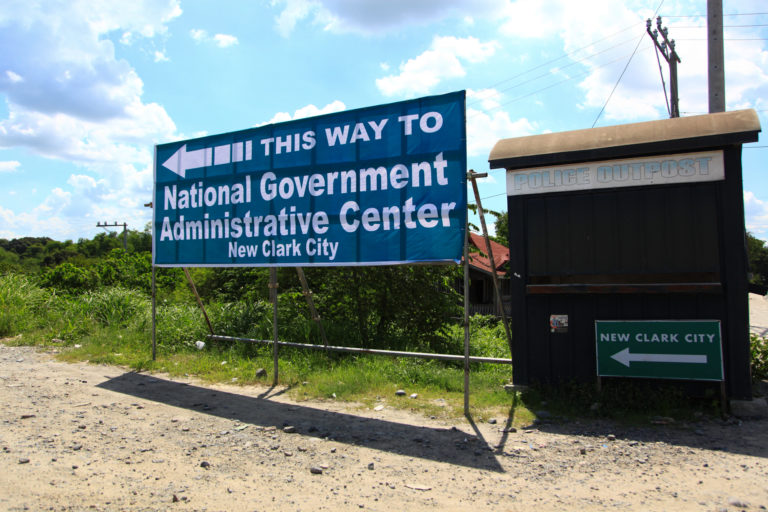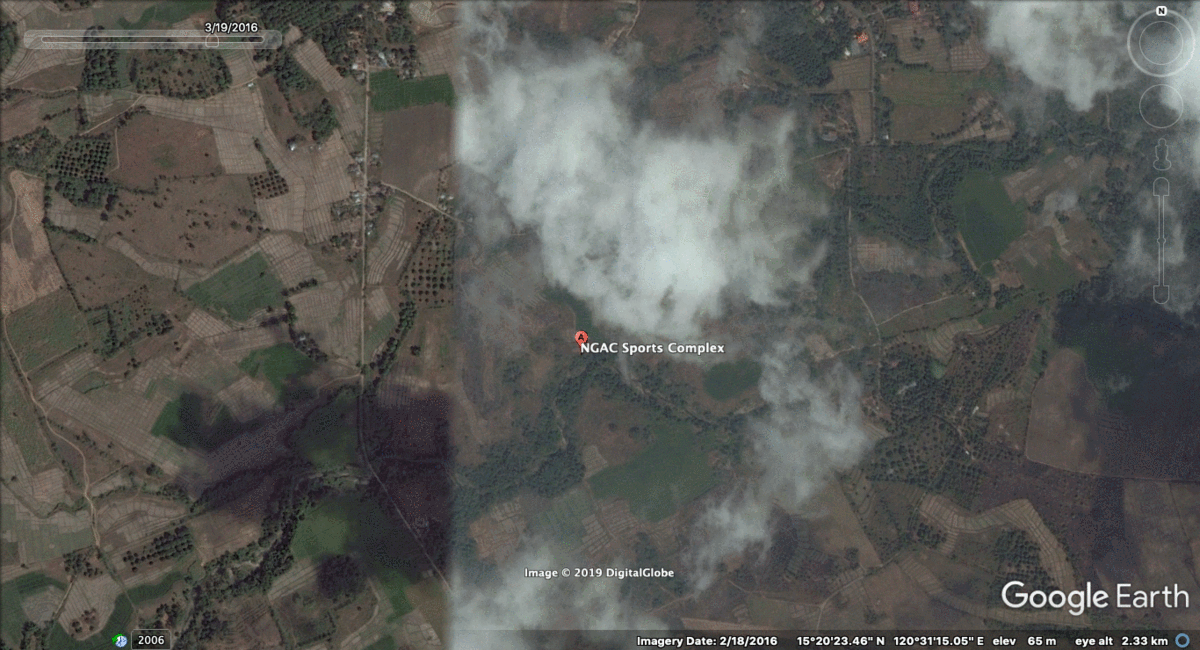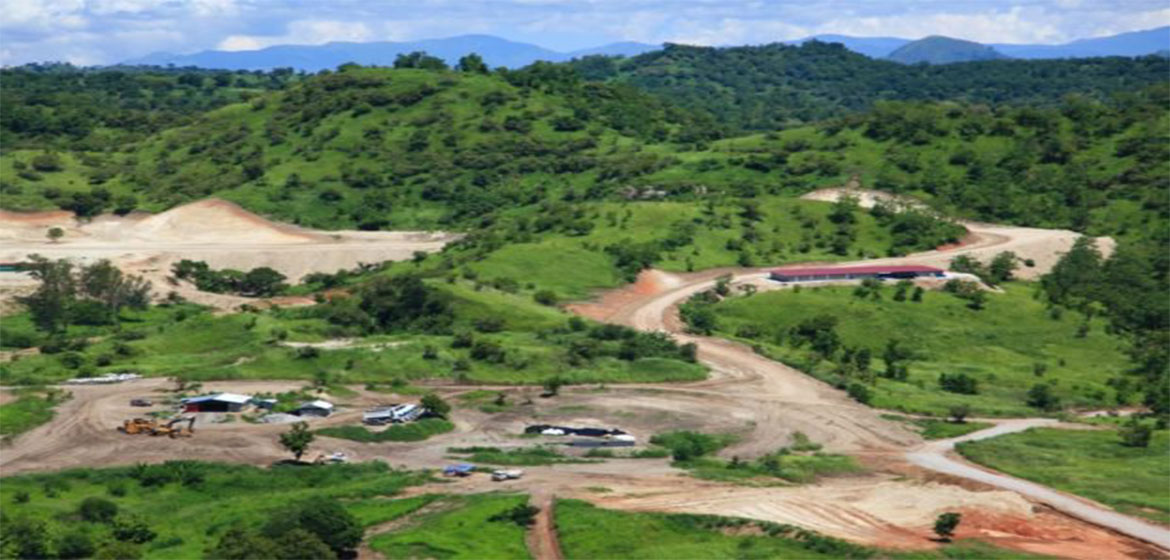By: Krixia Subingsubing, Mariejo S. Ramos
(First of two parts)
MANILA, Philippines — The plains and mountains of Capas, Tarlac, are tied to the stories of the Hungey, said to be the oldest Aeta tribe in the province.
Casimira Maniego, 68, looked out at the fields outside her home and remembered how her parents tended the green that had nurtured her and her five children. Everything she knows about the earth was passed on to her by her father, she said, the way it was passed on to her forebears.
“Our ancestors remain a part of our humanity,” she said. “Their presence is entwined with our daily lives and our environment.”
But their memories of home are in peril as the rapid development of the state-initiated New Clark City (NCC)—said to be the Philippines’ first smart and green metropolis—edges closer to their land now being claimed as eminent domain.
The NCC is set to be inaugurated on Nov. 6, but tens of thousands of farmers and tribespeople living in the development area are still ignorant of the project’s extent even as bulldozers have leveled their crops, according to a research led by the University of Glasgow (UG) in the United Kingdom and the University of the Philippines.
Displacement is imminent for the people who have tilled the land for decades, exposing them to the same disasters the NCC is being built to withstand.

A render of the proposed New Clark City land use plan. It will cover several sitios and barangays across Capas and Bamban, Tarlac. —PHOTOS BY KATHLEEN LEI LIMAYO, CONTRIBUTOR
P607-B metropolis
Located at Clark Special Freeport Zone in Capas and Bamban, NCC is a P607-billion metropolis touted as the country’s first “climate-change resilient” city.
This resilience is rooted in the master plan governing NCC’s entire economy, said Vince Dizon, chair of the Bases Conversion and Development Authority (BCDA). At its heart is clean energy and sustainable practices, which are expected to transform the way people commute and power their homes.
But a truly resilient city doesn’t just manage its resources well; it also empowers the most vulnerable, said Red Constantino of the Institute for Climate and Sustainable Cities.
An archipelago with long, meandering coastlines and a tropical climate, the Philippines is among the countries most vulnerable to both sudden and slow-onset impacts of climate change, such as sea level rise and ocean acidification, Constantino said.
Citing the National Urban Development Housing Framework, he defined resilience as “the ability of a locality and its citizens to withstand impacts and shocks, and to rebuild, reorganize or transform itself when necessary.”
“[It] encompasses the entirety of development, not just infrastructure sturdiness against disasters,” Constantino said, adding: “Acting on both disaster and climate risks also presents an opportunity to improve food and water security, secure livelihoods, and spur both sustainable development and economic growth.”
That’s also the impetus that drives NCC, Dizon said. Approved in 2015 during President Benigno Aquino III’s term, the project is expected to complete Phase 1 in time for its hosting of the Southeast Asian Games in November.

What used to be verdant rice fields were now leveled and demolished to make way for various infrastructure projects. This includes a large portion in Sitio Kalangitan, which would be the site for the upcoming Capas-SCTEx Road.
NCC is designed as an alternative to highly congested, poorly planned Manila. Modeled after green cities in Singapore and China, it was conceptualized by master planners from the Asian Development Bank, Japan Overseas Infrastructure Network, and Singapore’s Surbana Jurong.
“The vision [for NCC] was to be the first green, smart and truly resilient city, [and] the natural quality of the location gives it a strategically green and resilient character,” Dizon said.
Manila, for one, is at zero to 80 meters above sea level (masl) and sits atop several fault lines. NCC, on the other hand, is over 200 masl at its lowest and 800 at its peak.
Unlike Manila’s haphazard land use and development, NCC will develop only 40 percent of its land; the rest is for open space.
Development aggression
But Andre Ortega, a research fellow from UG who did a field investigation of areas covered by NCC, said the project was a classic case of development aggression.
Satellite images would bear him out. In the course of 18 months, NCC contractors managed to turn hectares of green into concrete.

Satellite images showing the changes on the land covered by the NCC
It’s why Ortega and his team began countermapping the development in November 2018, peeling back the towns’ geographical boundaries and borders to expose the narratives and historical accounts of their marginalized people.
“Maps are the product of struggle,” Ortega said. “The
BCDA has [its] own map and [its] own master plan, a narrative about how it wants to project the place, and we also have our accounts in partnership with the community. [Counter]mapping is the tool to counterpose and contradict these narratives.”
For six months, Ortega’s team lived among some of the estimated 15,000 local farmers and 20,000 Aeta and Abeling from around 26 indigenous communities likely to be affected by the development.
The team listened to the residents’ stories, and provided disposable cameras with which to take pictures of places they deemed crucial to their daily routines. The team even identified landmarks that have yet to be mapped but were tied to the residents’ lives.
What emerged, Ortega said, was a picture of generations of lowland farmers and Aeta in Tarlac: The earth gave them food, and the mountain covers protected them from the battering of typhoons.
Forbidden land
But when NCC kick-started development in 2017, productive rice fields like those of “Michael” in Sitio Kamatis were abruptly flattened to make way for concrete roads.
The sitio is the main site of the ongoing construction for Phase 1, or the National Government Administrative Center.
The rice crops in Michael’s paddies were nearly ripe for harvest when the backhoes came in 2018 and laid nearly a hectare of palay to waste.
He was paid around P300,000 for the land, which will become part of the Capas-SCTEx highway to link the town to the metropolis. But the lost crops would have been equivalent to 150 cavans of rice, he said.
Contractors also shaved certain parts of the forest cover of Mount Dalin in Sitio Alli, a small straw-hat mountain where the Aeta used to plant ube and tended farm animals.
The Aeta consider Dalin—“Tela Kaban” in their tongue—an ideal place for newly harvested palay to dry under the sun. The trails are level, and the summit is good for planting root crops.


Parts of Mount Dalin, which was shaved to make way for the Capas-SCTEx road.
Like most nomadic tribespeople, “Melba,” an Aeta Mahawang in Kalangitan, equated comfort with the freedom to roam and to plant food.
Then the bulldozers arrived “noong ikatatlo (2017),” Melba said, and the mountain they called home for generations was suddenly “marked”—forbidden land.
They were pushed back to the fringes of the sitio. Suddenly they were cramped in a small area with little arable land. “Before, we didn’t think about these things,” she said. “We were free.”
So Melba sent her two sons, aged 19 and 22, to work at the NCC construction site as laborers. But they worry that when construction for Phase 1 is done in August, they will also be out of work.
Redirecting rivers
In retracing the residents’ geographical memories, the research team also found that NCC’s contractors had redirected the natural flow of Cutcut and Marimla rivers to make way for a 1.4-kilometer river park.
According to the NCC master plan, altering the rivers’ flow based on a 500-year flood projection maximizes the socioeconomic value while minimizing harm to the ecosystem.
Dizon said check dams and edges along the river would create a permanent 45-hectare lake midstream, both a renewable water source for the city and the heart of a central park for Phase 2.
But Yany Lopez, chair of UP’s geography department and Ortega’s coresearcher, said these drastic changes disturbed the fragile ecobalance.
Residents, especially kids, have noted that certain birds, fishes and prawn, and even snakes were disappearing from the area, she said.
These changes are expected to compound the natural vulnerability of the NCC development, said assistant professor Ony Martinez, also Ortega’s coresearcher.
For one, Aranguren, Kalangitan, Maruglu and Anupul—
areas covered by the NCC development—are highly susceptible to landslides and flooding.
To determine this, the team overlaid the NCC development plan over the five-year flooding and landslide hazard maps by Project Noah of the Department of Science and Technology and the Mines and Geosciences Bureau.


To be fair, NCC is not claiming to be climate change-proof, as Dizon noted.
But “what kind of resiliency is the BCDA trying to build in this aggressive development, which clobbered the communities’ environment?” Martinez said.
Business-centric
And there have been casualties. In May, three young children were discovered dead in a pond that formed in a quarrying site for the NCC project.
“You’re really changing the ecosystem and expecting that it would not have an impact on the surrounding area,” Ortega said. “It’s a schizophrenic development. You’re trying to develop a green city but you’re removing the green.”
What’s clearest from the NCC development is that it remains business-centric, with little to no input from the people who cultivated the land, he said.
Those at most risk are the Aeta, already the most displaced group in the country, whose living conditions and food security are threatened by this development.
Dizon said the BCDA had met with an Aeta group accredited by the National Commission on Indigenous Peoples (NCIP) every month to make sure they “were not excluded from this development.”
Part of their demands were access to water and roads, and for the BCDA to build schools in the community, he said.
Dizon also issued the assurance that no ancestral domain would be affected by the development, per the NCIP.
But this technicality masks the development’s blind spot: the people whose stake in the land transcends state records.
Source:
Related to SDG 10: Reduced inequalities and SDG 16: Peace, justice and strong institutions



